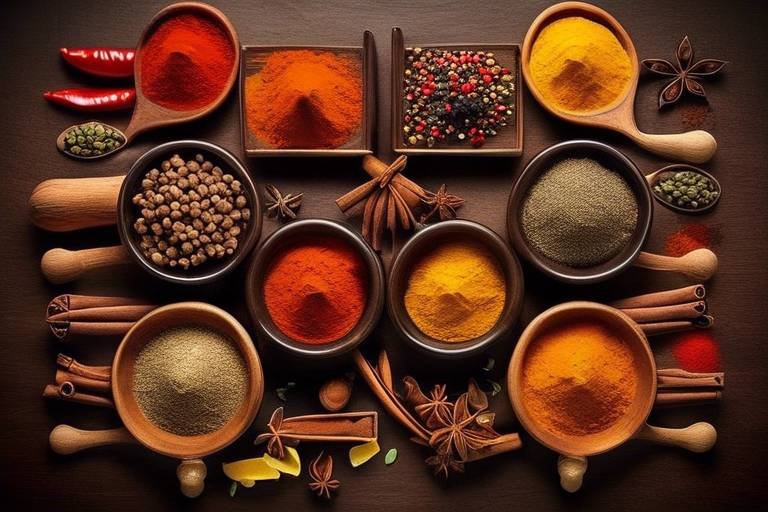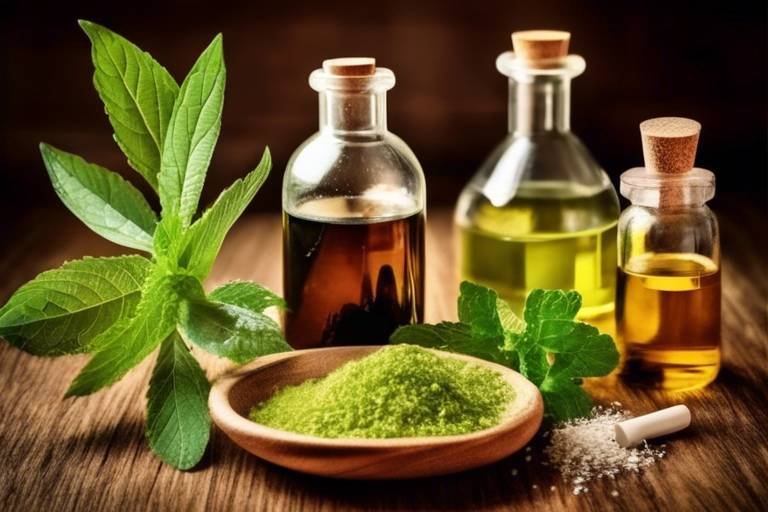The Chemistry of Spices - Enhancing Flavor and Health
Have you ever wondered why a pinch of spice can transform an ordinary dish into something extraordinary? The secret lies in the chemistry of spices. These tiny powerhouses are not just about adding flavor; they are packed with a plethora of chemical compounds that contribute to both taste and health benefits. From the warmth of cinnamon to the vibrant hue of turmeric, spices have a unique way of captivating our senses while offering a treasure trove of health perks. In this article, we will dive deep into the fascinating world of spices, uncovering how their chemical makeup enhances culinary experiences and promotes well-being.
Understanding the intricate chemical interactions that create the unique flavors in spices can elevate any cooking experience. For instance, when you sprinkle a bit of cumin into your chili, you're not just adding a flavor; you're introducing a complex array of aromatic compounds that dance on your palate. These compounds interact with our taste buds and olfactory senses, creating a symphony of flavors that can evoke memories and emotions. It's almost like a magic trick, where the right combination of spices can turn a simple meal into a feast for the senses.
Moreover, the art of seasoning is a skill that can be honed with knowledge of these chemical compounds. Chefs and home cooks alike can experiment with different spices to discover how they can complement or contrast with the main ingredients. It’s like being a conductor of an orchestra, where each spice plays its part to create a harmonious dish. So, the next time you cook, think about the chemistry behind your spices and how they can elevate your culinary creations.
Beyond their delightful flavors, many spices are also loaded with antioxidants and anti-inflammatory properties. This makes them beneficial for overall health and wellness. Incorporating spices into your diet is not just about taste; it’s a way to enhance your health naturally. For instance, spices like ginger and garlic have been used for centuries not only for their flavor but also for their healing properties. They are like nature's little soldiers, fighting off ailments and boosting our immune systems.
Cinnamon is a prime example of a spice that goes beyond just flavor. This beloved spice contains compounds that may help regulate blood sugar levels and has been linked to various health benefits. It’s a staple in many kitchens, not just for its sweet aroma but also for its potential medicinal properties. Think of cinnamon as a warm hug in a bowl of oatmeal, providing comfort while also supporting your health.
The magic of cinnamon lies in its primary active compound, cinnamaldehyde. This compound is responsible for its distinct flavor and is believed to have antimicrobial and anti-inflammatory effects. Imagine it as a shield, protecting your body from harmful bacteria while also providing a delicious taste to your meals. It’s no wonder that cinnamon has been celebrated in both cooking and traditional medicine for centuries.
Incorporating cinnamon into your meals is a breeze! Here are a few simple ideas:
- Add it to your morning oatmeal for a warm, comforting flavor.
- Blend it into smoothies for a spicy kick that also boosts health.
- Sprinkle it on baked goods to enhance sweetness without added sugar.
With cinnamon, you can enjoy its flavor while reaping its health benefits with ease.
Turmeric is often hailed as the golden spice, and for good reason. Its active ingredient, curcumin, is renowned for its powerful anti-inflammatory and antioxidant properties. This makes turmeric a popular choice among health-conscious individuals seeking natural ways to enhance their well-being. Just a pinch of turmeric can add a vibrant color and a warm flavor to dishes, making it a favorite in both culinary and medicinal applications.
Throughout history, many cultures have turned to spices in traditional medicine, showcasing their therapeutic properties. These natural remedies have been passed down through generations, highlighting the importance of spices in holistic health practices. They are more than just flavor enhancers; they are integral to maintaining health and wellness. Consider spices as nature's pharmacy, offering a variety of treatments for common ailments.
Ginger is another spice that stands out for its health benefits. Known for its digestive advantages and anti-nausea properties, ginger is often brewed into teas or used in remedies to alleviate various ailments. It’s like a gentle friend, soothing your stomach and providing comfort with every sip. Whether you’re feeling under the weather or just need a boost, ginger is a go-to spice that can help you feel better.
Garlic is not just a flavor powerhouse; it also boasts a compound called allicin, which has potent medicinal properties. From its antimicrobial effects to its ability to support heart health, garlic is a staple in both cooking and natural health practices. Think of garlic as a flavorful warrior, defending your body against illness while enhancing the taste of your favorite dishes.
Here are some common questions about spices and their benefits:
- What are the best spices for health? Some of the best spices include turmeric, ginger, cinnamon, and garlic due to their numerous health benefits.
- How can I store spices to keep them fresh? Store spices in a cool, dark place in airtight containers to preserve their flavor and potency.
- Can spices really improve my health? Yes! Many spices are rich in antioxidants and have anti-inflammatory properties that can contribute to overall health.

The Science Behind Flavor
Understanding the chemistry of spices is like peeling back the layers of an onion; each layer reveals a new depth of flavor, aroma, and health benefits. When you sprinkle a dash of cinnamon or a pinch of turmeric into your dish, you’re not just enhancing taste; you’re engaging in a complex dance of chemical interactions that elevate your culinary creations to new heights. The unique flavors we experience come from a variety of volatile compounds that interact with our taste buds and olfactory receptors, creating an explosion of sensations that can be both surprising and delightful.
At the heart of this flavor science are volatile compounds—the aromatic molecules that make spices so enticing. These compounds are responsible for the distinct scents and tastes that can transport you to far-off lands with just one whiff. For instance, the warm, sweet aroma of cinnamon is largely due to its primary component, cinnamaldehyde, while the earthy, peppery notes of black pepper come from piperine. Understanding these compounds not only enhances our appreciation of spices but also empowers us to use them more effectively in our cooking.
Moreover, the way we prepare and combine spices can significantly influence their flavor profiles. For example, toasting spices can release their essential oils, intensifying their flavor and aroma. Think of it like waking up a sleeping giant—when you heat those spices, they unleash a whole new level of richness, making your dishes more vibrant and exciting. This is why many recipes call for spices to be added at different stages of cooking; each step unlocks a new layer of flavor.
Furthermore, the interaction between spices and other ingredients can create a symphony of flavors. When combined with acidic ingredients like vinegar or citrus, spices can brighten and enhance their natural flavors. This is akin to adding a splash of color to a canvas—suddenly, everything pops! Understanding these interactions allows chefs and home cooks alike to craft dishes that are not only delicious but also balanced and harmonious.
To illustrate this point, consider the following table that highlights some common spices and their key flavor compounds:
| Spice | Key Flavor Compound | Flavor Profile |
|---|---|---|
| Cinnamon | Cinnamaldehyde | Sweet, Warm |
| Turmeric | Curcumin | Earthy, Bitter |
| Black Pepper | Piperine | Pungent, Spicy |
| Ginger | Gingerol | Spicy, Zesty |
In conclusion, the science behind flavor is a fascinating realm that combines chemistry, biology, and art. By understanding the compounds that contribute to the unique flavors of spices, we can enhance our culinary experiences and create dishes that are not only tasty but also healthy. So the next time you reach for that spice jar, remember you’re not just adding flavor; you’re engaging in a beautiful interplay of science and creativity!
- What are volatile compounds? Volatile compounds are aromatic molecules that contribute to the scent and flavor of spices.
- How can I enhance the flavor of spices? Toasting spices before adding them to your dishes can release their essential oils and intensify their flavors.
- Why do spices taste different when combined? The interaction between spices and other ingredients can create new flavor profiles, enhancing the overall taste of a dish.

Health Benefits of Common Spices
Spices are not just mere flavor enhancers; they are nature's little powerhouses packed with health benefits. Each spice carries a unique profile of chemical compounds that contribute not only to their distinct flavors but also to their remarkable health-promoting properties. When you sprinkle a dash of spice into your meals, you're not just adding a burst of flavor; you're also infusing your dishes with a variety of health benefits that can enhance your overall well-being.
For instance, ginger is renowned for its digestive properties, often used to soothe an upset stomach and alleviate nausea. It's like having a natural remedy right in your spice rack! Similarly, cumin is celebrated not just for its warm, earthy flavor but also for its potential to aid digestion and boost the immune system. These spices exemplify how culinary and health benefits can beautifully intertwine.
Moreover, spices like black pepper contain piperine, a compound that not only adds a kick to your dishes but also enhances the bioavailability of nutrients. This means that your body can absorb more of the good stuff from the food you eat. So, next time you reach for the pepper shaker, remember that it’s doing more than just seasoning your meal.
Let’s take a closer look at some common spices and their health benefits:
| Spice | Health Benefits |
|---|---|
| Cinnamon | Regulates blood sugar levels, rich in antioxidants |
| Turmeric | Anti-inflammatory, antioxidant properties |
| Ginger | Digestive aid, anti-nausea |
| Garlic | Boosts immunity, antimicrobial properties |
| Cumin | Aids digestion, rich in iron |
Incorporating these spices into your daily diet can be as simple as adding them to your morning smoothie, sprinkling them on roasted vegetables, or stirring them into soups and stews. The possibilities are endless, and the health benefits are just a sprinkle away!
So, the next time you’re whipping up a meal, think beyond just taste. Embrace the health-boosting properties of spices and let them transform your culinary creations into nourishing delights. After all, who wouldn’t want their food to taste amazing while also supporting their health?
- What are some easy ways to incorporate spices into my diet? You can add spices to smoothies, oatmeal, soups, and even sprinkle them on salads for an extra flavor boost.
- Are all spices healthy? While many spices offer health benefits, it's essential to use them in moderation and be aware of any allergies or sensitivities.
- Can spices replace medications? Spices can complement a healthy lifestyle but should not replace prescribed medications. Always consult with a healthcare professional for medical advice.

Cinnamon: More Than Just a Sweet Spice
Cinnamon is often viewed as just a delightful addition to our favorite desserts and beverages, but it’s so much more than that! This aromatic spice, derived from the inner bark of trees belonging to the genus Cinnamomum, has been cherished for centuries not only for its sweet flavor but also for its impressive array of health benefits. Imagine a spice that can elevate your morning oatmeal while simultaneously working to balance your blood sugar levels—sounds like magic, right? Well, it’s all thanks to the unique chemical compounds found in cinnamon.
One of the standout features of cinnamon is its primary active compound, cinnamaldehyde. This is what gives cinnamon its characteristic flavor and aroma, but it also plays a significant role in its health benefits. Research has shown that cinnamaldehyde possesses antimicrobial and anti-inflammatory properties, which can help support your immune system and combat various ailments. In fact, the spice has been linked to improved heart health and may even aid in reducing the risk of chronic diseases.
But how exactly does cinnamon work its magic? The answer lies in its ability to improve insulin sensitivity. Insulin is the hormone responsible for regulating blood sugar levels, and when our bodies become resistant to it, we can face serious health issues, including type 2 diabetes. By incorporating cinnamon into your diet, you may help your body utilize insulin more effectively, keeping those pesky blood sugar spikes at bay. It’s like having a little helper in your kitchen that not only adds flavor but also promotes wellness!
So, how can you easily incorporate this powerhouse spice into your daily meals? Here are a few delicious ideas:
- Add a sprinkle of cinnamon to your morning coffee or latte for a cozy kick.
- Mix it into your oatmeal or yogurt for a sweet and nutritious breakfast.
- Use it in baking—cinnamon pairs beautifully with apples, bananas, and other fruits.
- Try adding it to savory dishes like curries or stews for a unique flavor twist.
In conclusion, cinnamon is not just a sweet spice; it’s a versatile ingredient that can enhance both flavor and health. Whether you’re looking to spice up your meals or boost your wellness routine, cinnamon is an excellent choice that packs a punch. So next time you reach for that jar of cinnamon, remember, you’re not just adding flavor; you’re also inviting a host of health benefits to your plate!
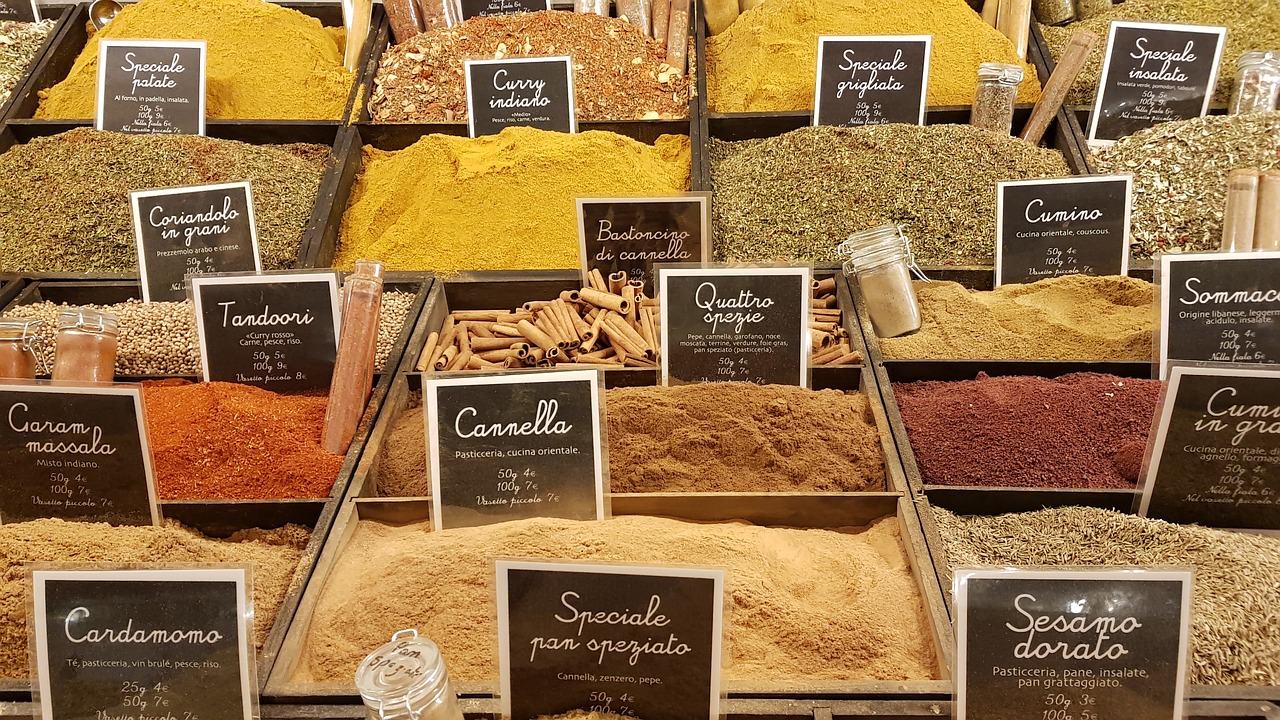
Active Compounds in Cinnamon
Cinnamon is not just a delightful addition to your morning coffee or a sprinkle on your oatmeal; it is a powerhouse of active compounds that offer both flavor and health benefits. The most significant of these compounds is cinnamaldehyde, which is responsible for the spice's signature aroma and taste. This compound plays a crucial role in the spice's potential health benefits, including its antimicrobial and anti-inflammatory properties. But what exactly does this mean for your health?
When you consume cinnamon, the cinnamaldehyde interacts with your body in various ways. It has been shown to help regulate blood sugar levels, making it a popular choice for individuals looking to manage their glucose levels naturally. Additionally, this compound has been linked to improved heart health, as it can help lower cholesterol levels and reduce the risk of cardiovascular diseases.
Moreover, cinnamon contains other beneficial compounds, including:
- Coumarin: A natural compound that may have anticoagulant properties, but should be consumed in moderation due to potential toxicity in large amounts.
- Polyphenols: These antioxidants help combat oxidative stress in the body, which can lead to chronic diseases.
- Essential Oils: The oils extracted from cinnamon bark contain various compounds that contribute to its flavor and health benefits.
Research indicates that the combination of these compounds can enhance your overall well-being. For example, a study published in the Journal of Nutritional Biochemistry found that cinnamon extract could significantly lower blood sugar levels in individuals with type 2 diabetes. This finding highlights how a simple spice can have profound effects on health.
To maximize the benefits of cinnamon, it's essential to choose the right type. There are two main varieties: Cassia and Ceylon. While Cassia cinnamon is more commonly found in grocery stores and is less expensive, Ceylon cinnamon is often referred to as "true cinnamon" and is considered to have a higher concentration of beneficial compounds with lower levels of coumarin.
Incorporating cinnamon into your diet is not only easy but can also be delicious! Whether you sprinkle it on your morning smoothie, mix it into your baking, or even steep it in your tea, the possibilities are endless. The rich, warm flavor of cinnamon can elevate your culinary creations while simultaneously providing health benefits.
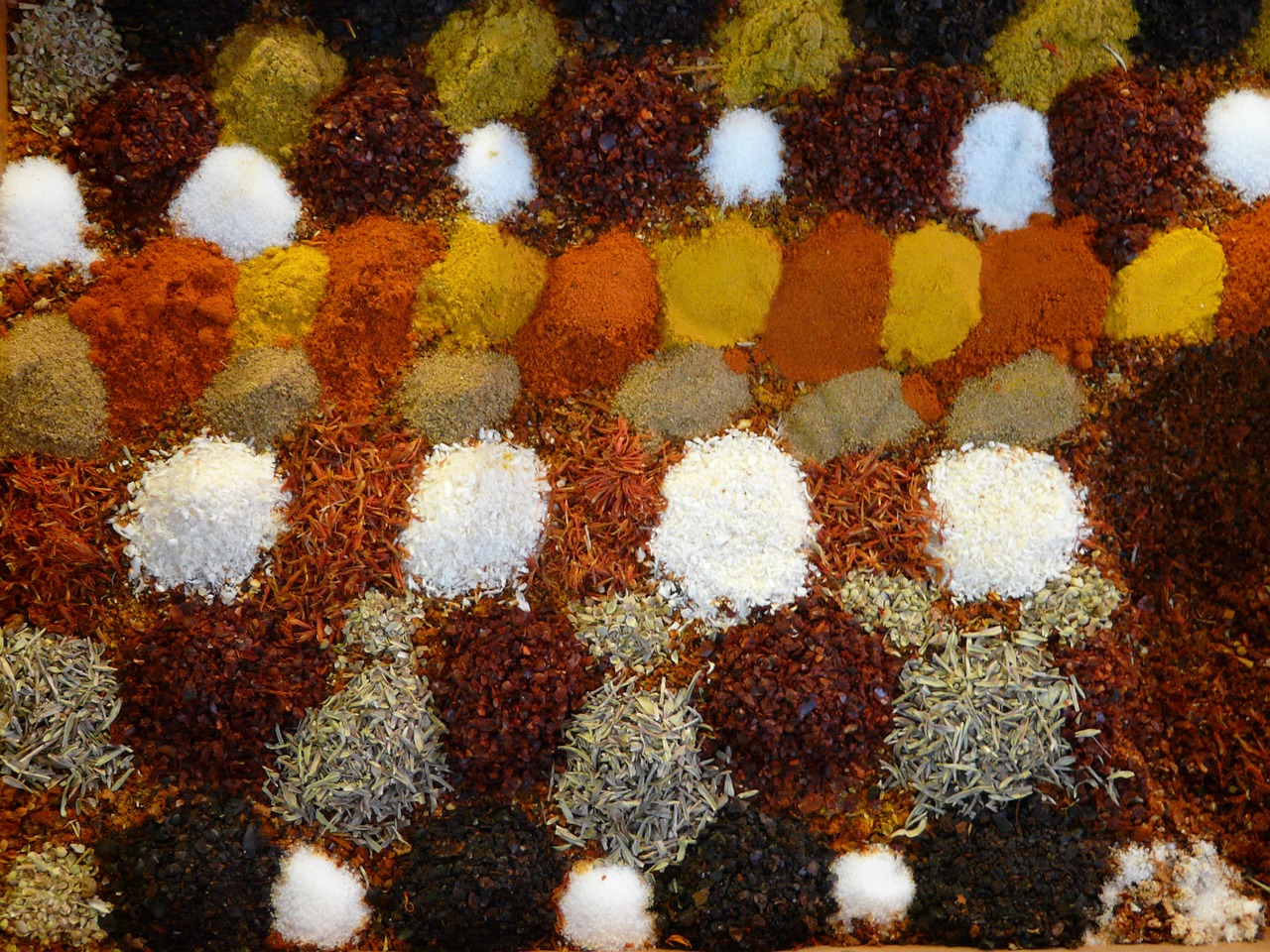
How to Incorporate Cinnamon into Your Diet
Cinnamon is not just a delightful spice that adds warmth and sweetness to your dishes; it’s also incredibly versatile and easy to incorporate into your daily meals. Whether you're a culinary novice or a seasoned chef, integrating cinnamon into your diet can be both simple and enjoyable. Imagine waking up to a steaming bowl of oatmeal sprinkled with a dash of cinnamon, instantly elevating your breakfast experience. It’s like giving your taste buds a warm hug!
One of the easiest ways to enjoy cinnamon is by adding it to your morning beverages. Consider stirring a teaspoon of ground cinnamon into your coffee or tea. This not only enhances the flavor but also infuses your drink with the potential health benefits of this remarkable spice. If you prefer smoothies, try blending in a sprinkle of cinnamon for an extra layer of flavor that complements fruits like bananas and apples beautifully.
When it comes to baking, cinnamon shines like a star. You can enhance the flavor of muffins, pancakes, and breads by simply adding a teaspoon or two to your batter. For example, cinnamon rolls are a classic treat that showcases the spice's warmth and sweetness, making them a favorite for brunch or dessert. But why stop there? You can also sprinkle cinnamon on roasted vegetables or sweet potatoes to create a delightful contrast that will surprise your palate.
Here are some creative ways to incorporate cinnamon into your meals:
- Oatmeal: Add a teaspoon of cinnamon to your morning oatmeal for a flavorful and healthy start.
- Smoothies: Blend cinnamon with fruits like bananas, mangoes, or berries for a delicious twist.
- Yogurt: Mix cinnamon into plain yogurt along with some honey and nuts for a nutritious snack.
- Soups: A pinch of cinnamon can enhance the flavor of savory soups, particularly those with a tomato or pumpkin base.
- Salads: Sprinkle cinnamon over fruit salads or even savory salads to add a unique flavor dimension.
Incorporating cinnamon into your diet doesn’t have to be complicated. The key is to experiment and find what works best for your taste buds. Whether you prefer it in sweet or savory dishes, this spice can enhance your meals while providing potential health benefits. So why not explore the world of cinnamon today? Your taste buds and body will thank you!
1. Can I use cinnamon in savory dishes?
Absolutely! Cinnamon can add a unique depth of flavor to savory dishes, especially in stews, soups, and roasted vegetables.
2. Is there a difference between ground cinnamon and cinnamon sticks?
Yes, ground cinnamon is made from the inner bark of the cinnamon tree, while cinnamon sticks are the rolled-up bark. Both have similar flavors, but the sticks can be used for infusing liquids, while ground cinnamon is more versatile for baking and cooking.
3. How much cinnamon should I consume daily?
Moderation is key! A teaspoon or two is generally considered safe and beneficial for most people. However, it’s always best to consult with a healthcare professional if you have specific health concerns.
4. Are there any side effects of consuming too much cinnamon?
Yes, excessive consumption of cinnamon, particularly cassia cinnamon, can lead to health issues due to its coumarin content. Stick to moderate amounts to enjoy its benefits without adverse effects.
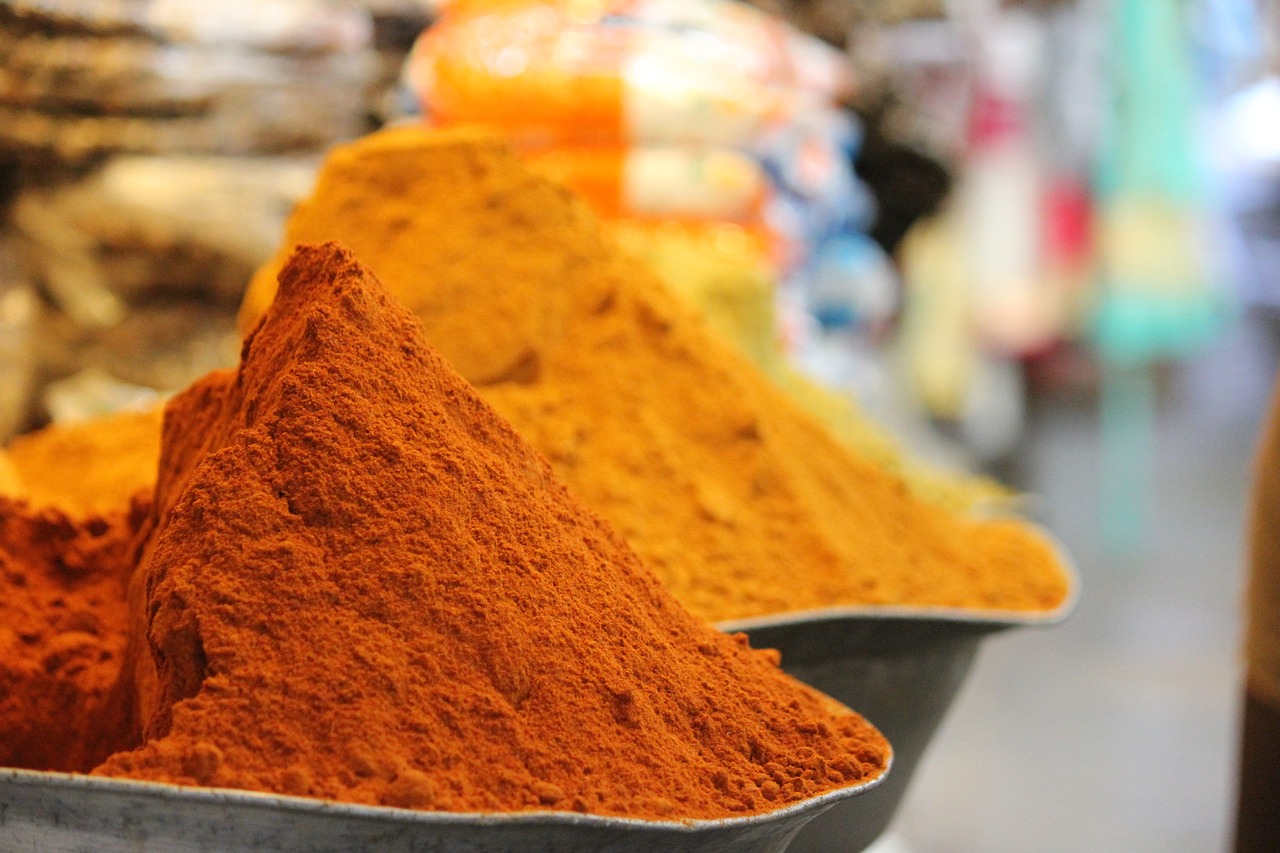
Turmeric: The Golden Spice
Turmeric, often referred to as the golden spice, has been a staple in kitchens and traditional medicine for centuries. Its vibrant yellow color isn't just visually appealing; it signals the presence of curcumin, the active compound responsible for many of its health benefits. This spice is more than just a flavor enhancer; it's a powerhouse of nutrients that can significantly impact your well-being. Have you ever wondered why turmeric has gained such popularity in the health community? Well, let’s dive into its remarkable properties!
Curcumin is known for its anti-inflammatory and antioxidant properties, making turmeric a popular choice for those looking to boost their health naturally. Research has shown that curcumin can help combat chronic inflammation, which is linked to various diseases, including heart disease and cancer. It’s like a shield for your body, fighting off the bad guys while promoting overall wellness. But how do you incorporate this golden spice into your daily routine? It's easier than you might think!
One of the simplest ways to enjoy turmeric is by adding it to your meals. Here are a few ideas:
- Golden Milk: Mix turmeric with warm milk (or a plant-based alternative), a dash of black pepper, and honey for a soothing drink.
- Curry Dishes: Use turmeric as a base spice in your favorite curry recipes to enhance flavor and color.
- Smoothies: Add a teaspoon of turmeric to your morning smoothie for an extra health boost.
- Soups and Stews: Stir in turmeric while cooking soups and stews for a rich, earthy flavor.
It's important to note that curcumin is not easily absorbed by the body. To maximize its benefits, pairing turmeric with black pepper can increase absorption significantly. Think of it as a dynamic duo, where one enhances the other's effectiveness. Additionally, incorporating healthy fats, such as coconut oil, can also improve curcumin's bioavailability. This means your body can make the most out of this golden spice!
As you explore the world of turmeric, you might also be intrigued by its role in traditional medicine. In Ayurvedic practices, turmeric has been used for centuries to treat various ailments, from digestive issues to skin conditions. It's fascinating how ancient wisdom aligns with modern science, isn't it? Whether you’re looking to spice up your meals or seeking natural remedies, turmeric is a versatile and valuable addition to your health toolkit.
So, the next time you reach for that jar of turmeric, remember that you’re not just adding flavor to your dish; you’re also inviting a wealth of health benefits into your life. Embrace the golden spice, and let it work its magic!
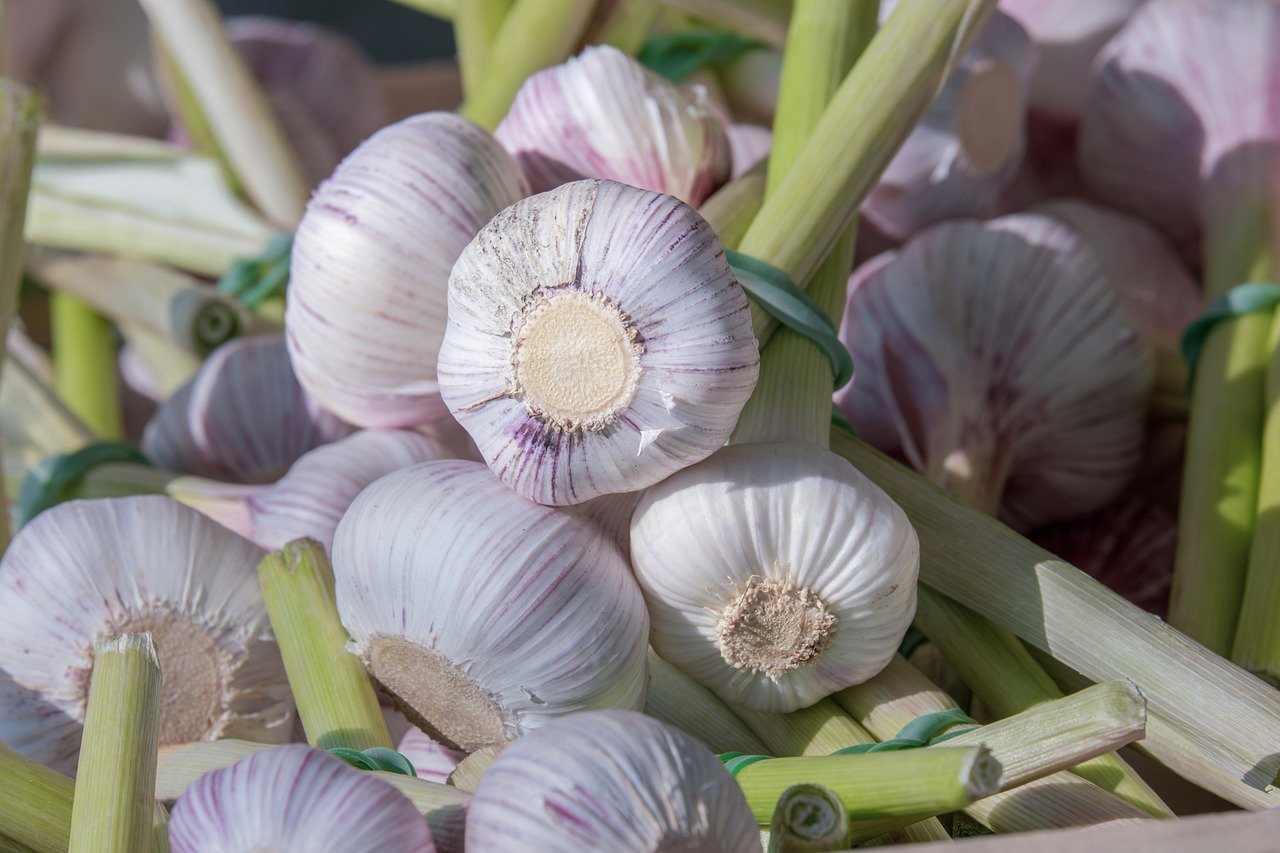
Spices and Their Role in Traditional Medicine
For centuries, spices have been more than just flavor enhancers in our kitchens; they have played a pivotal role in traditional medicine across various cultures. Imagine walking through an ancient marketplace, surrounded by vibrant colors and intoxicating aromas. Each spice tells a story, not just of culinary delight but of healing and wellness. From the Ayurvedic practices of India to the traditional Chinese medicine systems, spices have been revered for their therapeutic properties, showcasing the profound connection between nature and health.
Take, for instance, the humble cumin. This spice is not just a staple in many dishes; it has been used in traditional medicine to aid digestion and boost immunity. Similarly, coriander is celebrated for its ability to alleviate digestive issues and reduce inflammation. The incredible thing about spices is their ability to offer a multitude of health benefits, often without the side effects associated with pharmaceutical drugs. This is where the beauty of spices lies—they are gifts from nature, packed with nutrients and compounds that can promote well-being.
Many spices contain bioactive compounds that have been scientifically studied for their health benefits. For example, turmeric is renowned for its active ingredient, curcumin, which has powerful anti-inflammatory and antioxidant properties. It has been traditionally used to treat a variety of ailments, including arthritis and digestive disorders. In fact, a growing body of research supports the use of turmeric in preventing chronic diseases, showcasing its role as a natural remedy.
Another spice with a storied history in traditional medicine is ginger. Known for its warming properties, ginger has been utilized to combat nausea, improve digestion, and even reduce muscle pain. Imagine sipping a warm cup of ginger tea when you're feeling under the weather; it’s not just comforting, but it’s also a time-tested remedy that has stood the test of time.
In addition to their medicinal properties, spices also play a crucial role in enhancing the flavor of dishes, making them a dual-purpose powerhouse in our kitchens. The synergy between flavor and health is what makes spices so special. They invite us to explore new culinary horizons while simultaneously nurturing our bodies. It’s a delightful dance of taste and wellness that has been celebrated for generations.
To illustrate the medicinal benefits of some common spices, consider the following table:
| Spice | Health Benefits | Traditional Uses |
|---|---|---|
| Cinnamon | Regulates blood sugar, anti-inflammatory | Used in teas and desserts |
| Turmeric | Anti-inflammatory, antioxidant | Used in curries and as a health tonic |
| Ginger | Digestive aid, anti-nausea | Used in teas and remedies |
| Garlic | Antimicrobial, heart health | Used in cooking and natural remedies |
In conclusion, the role of spices in traditional medicine is a testament to their enduring legacy. They bridge the gap between culinary art and holistic health, inviting us to explore their myriad benefits. As we continue to uncover the science behind these powerful ingredients, let’s remember to honor their place in our kitchens and our lives. After all, every pinch of spice is a sprinkle of wellness waiting to be discovered.
- What are some common spices used in traditional medicine? Common spices include turmeric, ginger, garlic, and cinnamon, each with unique health benefits.
- How can I incorporate these spices into my diet? You can add them to meals, teas, smoothies, and baked goods for enhanced flavor and health benefits.
- Are there any side effects of using spices medicinally? While spices are generally safe, it's important to use them in moderation and consult with a healthcare provider if you have specific health concerns.
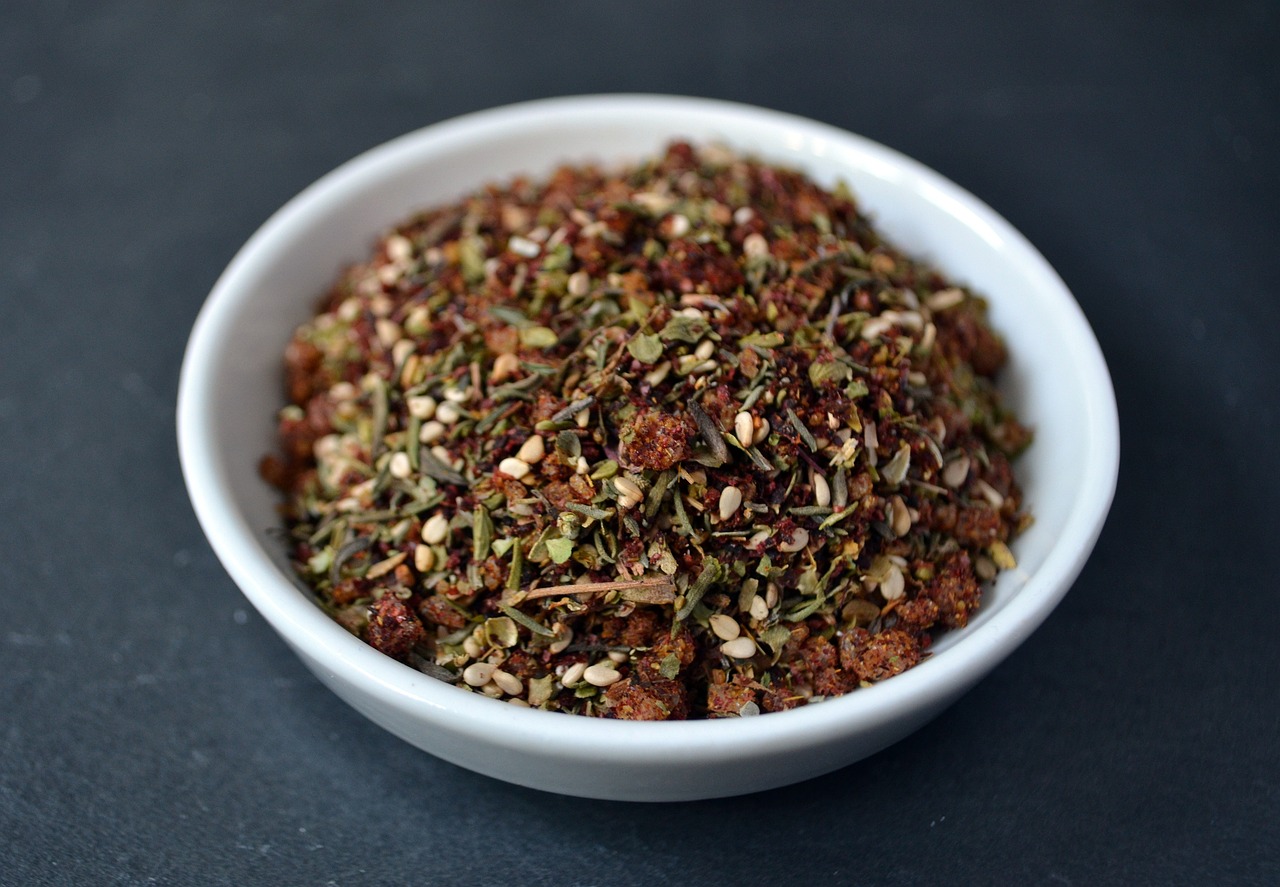
Ginger: A Natural Remedy
Ginger has been celebrated for centuries, not just as a spice that adds a zing to your dishes, but as a powerful natural remedy. Imagine this: you’re feeling a bit queasy or your stomach is in knots, and what do you reach for? That’s right, ginger! This humble root is packed with a plethora of health benefits that go beyond its culinary uses. Its reputation as a digestive aid is well-founded, and it’s often the go-to solution for nausea, whether it’s from motion sickness, morning sickness during pregnancy, or even post-surgery recovery.
One of the key components that make ginger so effective is its active compound, gingerol. This compound is responsible for that characteristic spicy flavor and aroma of ginger, but it also plays a significant role in its medicinal properties. Gingerol has been shown to have anti-inflammatory and antioxidant effects, which can help reduce oxidative stress in the body and promote overall well-being. But that's not all! Ginger also stimulates digestion and can help alleviate bloating and gas, making it a fantastic ally for anyone looking to maintain gut health.
Incorporating ginger into your daily routine is easier than you might think. You can enjoy it in various forms, whether as fresh ginger root, powdered spice, or even ginger tea. Here are a few simple ways to add this miracle root to your diet:
- Ginger Tea: Brew fresh ginger slices in hot water for a soothing drink that can help ease nausea and improve digestion.
- Smoothies: Add a teaspoon of grated ginger to your morning smoothie for a refreshing kick and health boost.
- Cooking: Use ginger in stir-fries, marinades, or soups to enhance flavor while reaping its health benefits.
Studies suggest that ginger may also have potential benefits for reducing muscle pain and soreness after intense workouts. Imagine saying goodbye to those post-exercise aches with a simple addition of ginger to your diet! Furthermore, ginger has been researched for its potential anti-cancer properties, particularly in relation to colorectal cancer. This makes it not just a flavor enhancer but a serious contender in the realm of health and wellness.
In summary, ginger is more than just a spice; it’s a natural remedy that can enhance your health in numerous ways. Whether you’re sipping on ginger tea or adding it to your favorite dishes, you’re not just enjoying a delightful flavor, but you’re also supporting your body’s health. So next time you’re in the kitchen, don’t forget to reach for that ginger root – your body will thank you!
Here are some common questions about ginger and its health benefits:
- Can ginger help with nausea? Yes, ginger is widely recognized for its ability to alleviate nausea, particularly in cases of motion sickness and pregnancy.
- Is ginger safe to consume daily? For most people, consuming ginger in moderate amounts is safe. However, it's always best to consult with a healthcare provider if you have specific health concerns.
- What is the best way to consume ginger? Ginger can be consumed in various forms, including fresh, powdered, or as tea. Each form has its unique benefits and flavors.

Garlic: A Flavorful Healer
Garlic, often referred to as a superfood, is more than just a common ingredient in kitchens around the world; it's a powerhouse of health benefits packed into a tiny clove. This humble bulb has been used for centuries, not only to enhance the flavor of dishes but also as a natural remedy for various ailments. The magic of garlic lies in its active compound, allicin, which is responsible for its pungent aroma and numerous health-promoting properties. When you crush or chop garlic, allicin is released, and that's when the healing begins!
But what exactly makes garlic so special? Let's break it down: garlic is known for its antimicrobial effects, which means it can help fend off harmful bacteria, viruses, and fungi. It's like having a tiny army of defenders in your body, ready to fight off invaders! Additionally, garlic has been linked to improved cardiovascular health. Studies have shown that regular consumption of garlic can help lower blood pressure and reduce cholesterol levels, making it a heart-friendly addition to your diet.
Incorporating garlic into your meals can be both easy and delicious. You can roast it, sauté it, or even eat it raw for maximum benefits. Imagine adding roasted garlic to your mashed potatoes or tossing raw garlic into a fresh salad dressing. The flavor it imparts is simply irresistible! Plus, you can enjoy its health benefits in various forms:
- Raw Garlic: Chopped or crushed, it can be added to salads or dips.
- Roasted Garlic: Sweet and creamy, perfect for spreading on bread.
- Garlic Supplements: Available for those who prefer a concentrated dose.
It's fascinating to note that garlic has been a staple in traditional medicine across various cultures. For instance, ancient Egyptians used garlic to boost strength and endurance, while traditional Chinese medicine has utilized it for its warming properties to combat colds and flu. This rich history showcases the deep-rooted belief in garlic's healing capabilities.
However, while garlic is generally safe for most people, it's important to consume it in moderation. Overindulgence can lead to gastrointestinal discomfort. Additionally, those on certain medications, such as blood thinners, should consult with a healthcare provider before significantly increasing their garlic intake.
In summary, garlic is not just a flavorful addition to your meals; it's a natural healer that can enhance your health in multiple ways. So, the next time you reach for that bulb, remember that you're not just cooking—you're also nurturing your body!
Q: How much garlic should I eat daily for health benefits?
A: Most health experts recommend consuming 1-2 cloves of garlic per day to reap its health benefits.
Q: Can garlic help with colds and flu?
A: Yes! Garlic has immune-boosting properties that can help your body fight off colds and flu.
Q: Is it better to eat garlic raw or cooked?
A: Raw garlic contains more allicin, which is beneficial. However, cooked garlic still offers health benefits and is easier to digest for some people.
Frequently Asked Questions
- What are the main chemical compounds in spices that enhance flavor?
Spices contain a variety of chemical compounds such as essential oils, phenolic compounds, and alkaloids that contribute to their unique flavors. For instance, the compound cinnamaldehyde in cinnamon gives it its sweet and warm flavor, while curcumin in turmeric provides its distinct earthy taste.
- How can spices improve my health?
Many spices are rich in antioxidants and possess anti-inflammatory properties. For example, turmeric is known for its curcumin, which helps fight inflammation, while ginger has compounds that aid digestion and reduce nausea. Incorporating these spices into your diet can promote overall wellness.
- Can I use cinnamon for blood sugar regulation?
Absolutely! Cinnamon has been linked to improved insulin sensitivity and may help regulate blood sugar levels. Just a sprinkle in your morning oatmeal or smoothie can make a difference!
- What are some easy ways to add turmeric to my meals?
You can easily incorporate turmeric into your diet by adding it to curries, soups, or even smoothies. Its vibrant color and health benefits make it a fantastic addition to a variety of dishes!
- Is ginger effective for nausea and digestive issues?
Yes! Ginger has been used for centuries as a natural remedy for nausea and digestive discomfort. You can enjoy it in teas, or simply chew on some fresh ginger root for quick relief.
- What makes garlic a powerful natural remedy?
Garlic contains allicin, a compound known for its antimicrobial properties. This makes garlic not just a flavorful addition to meals but also a potent ally in boosting your immune system and fighting off illnesses.

